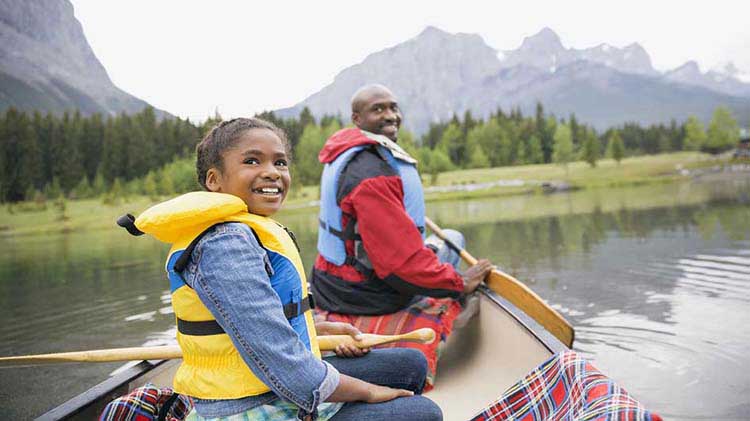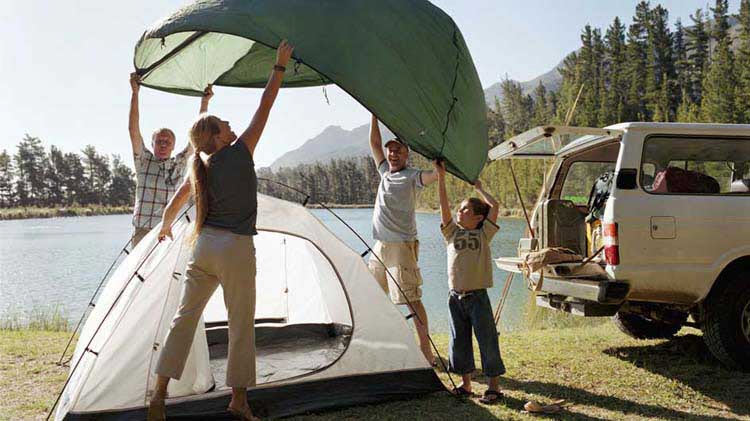How to protect against spider and insect bites
Know how to keep spiders and insects away.
Spider and insect bites or stings can quickly suck the fun out of any outdoor adventure. Learn how to protect yourself, which dangerous bugs to keep an eye out for and what to do if they get you.
Help prevent insect bites
Here are a few ideas for preventing bug and insect bites:
- Wear protective clothing. Lightweight pants and long-sleeved shirts, a hat, gloves, high socks, and closed-toe shoes provide good protection when working or playing outside. They also provide protection when working inside in crawl spaces, infested areas and also when camping.
- Remove wasp nests. Have a professional remove wasp nests close to your home or other living areas.
- Install screens. Install tight-fitting window and door screens to keep insects from getting inside your home.
- Use repellant. Apply insect repellent to your clothing and skin before going outside. Natural and essential oils can be used as insect repellent and help you avoid chemical exposure. Lavender, lemongrass and thyme are excellent choices for keeping chiggers, fleas, mosquitos and ticks away. Basil, clove, eucalyptus, lavender and peppermint help keep flies away, as well.
- Eliminate standing water. Mosquitoes can breed in tiny amounts of water, so making sure that standing water is removed is important. Regularly dump or drain tires, gutters, birdbaths, wheelbarrows, toys, pots and planters.
- Sow plants that repel insects. Certain plants including marigolds, chrysanthemums, asters, and pyrethrum daisies are a few. Herbs such as basil, anise and coriander help to repel a broad spectrum of insects.
- Use candles or burn herbs. Citronella smoke repels mosquitoes. Also, burning sage or rosemary over coals helps to repel mosquitoes.
- Add a bat house to your yard or home. One small brown bat can eat as many as 600 mosquitoes in one hour.
Poisonous bugs
Be sure to avoid insects with bright, contrasting patterns like black and yellow, red or orange, as these colors often reveal them as venomous or poisonous. Here are a few to watch out for.
- Brown recluse spiders can be ¼ to ¾ inch long and have violin-shape markings on their bodies.
- Black widow spiders are about 1½ inches long and typically have red, hourglass-shape markings on the abdomen.
- Wasps, which include yellow jackets and hornets, can be identified by a black and yellow or brown-red color pattern.
- Africanized honeybees look like regular honeybees but tend to swarm their targets with hundreds of stings.
- Red fire ants are less than ¼ inch long and red-brown in color. They will bite and sting repeatedly if their colony is threatened.
How to treat bites and stings
Watching for allergic reactions and treating bites and stings immediately is important. Many bites go away on their own but here are a few ways to treat them.
- Move to a safe area. Moving away from the location of the incident will reduce the risk of additional bites or stings.
- Remove the stinger. Some wasp and bee stings require removing the stinger from the area, if possible. Using your fingernail to scrape the skin is usually sufficient to remove the stinger.
- Cleanse thoroughly. Wash spider bites with soap and water.
- Elevate the area. Elevating the area helps to reduce swelling.
- Apply a cool compress. Applying a cool compress or ice to the bite also helps to reduce swelling.
- Apply a cream or other treatment. Some pain relievers, lotions such as hydrocortisone cream, calamine lotion or a baking soda paste help. Reduce itching by taking an antihistamine.
- Seek immediate medical care if allergic. Even if your reaction is minor it is a good idea to call your doctor. Call 911 or your local emergency number if symptoms include difficulty breathing, swelling of lips, eyelids or throat, dizziness, rapid heartbeat, hives, nausea or seizures.




